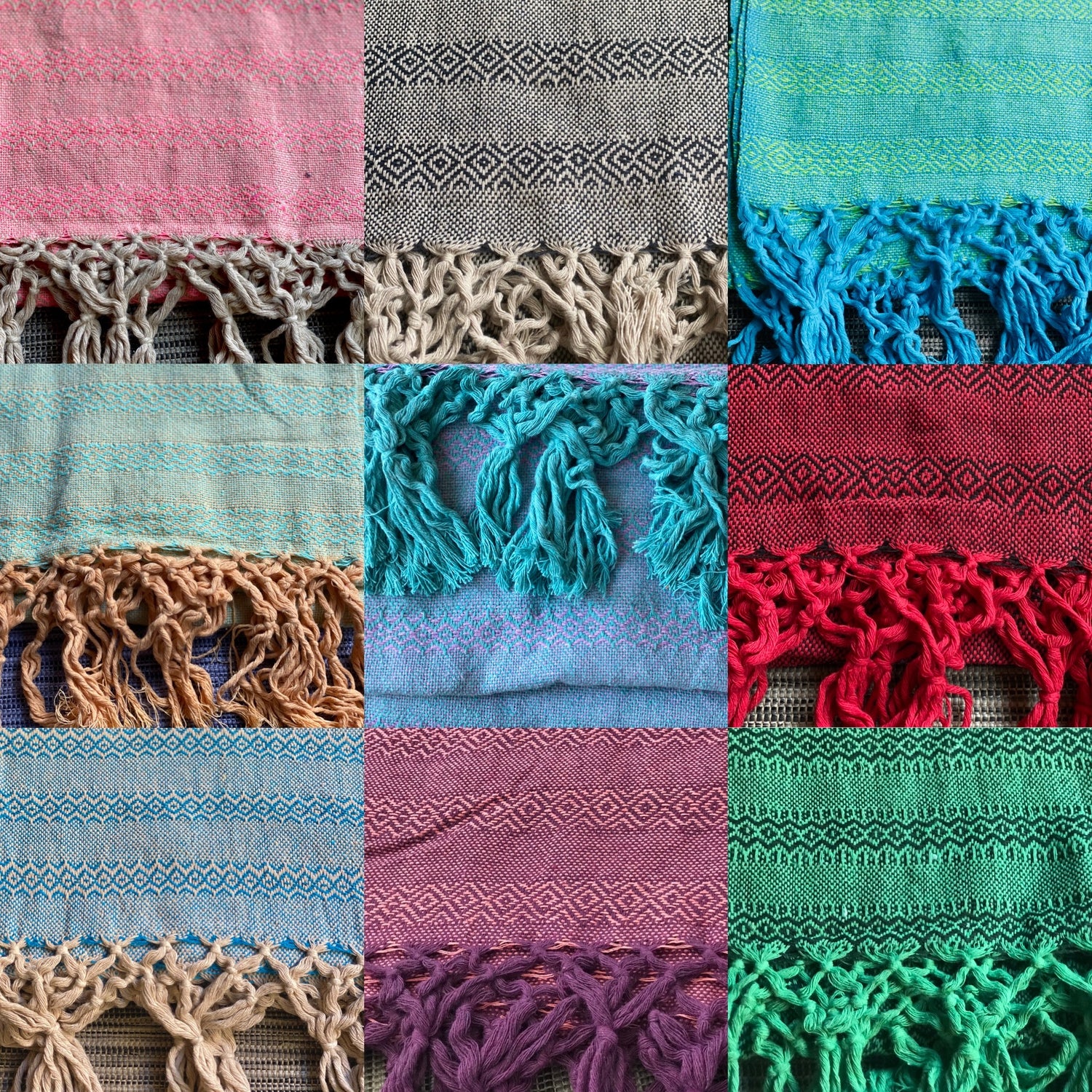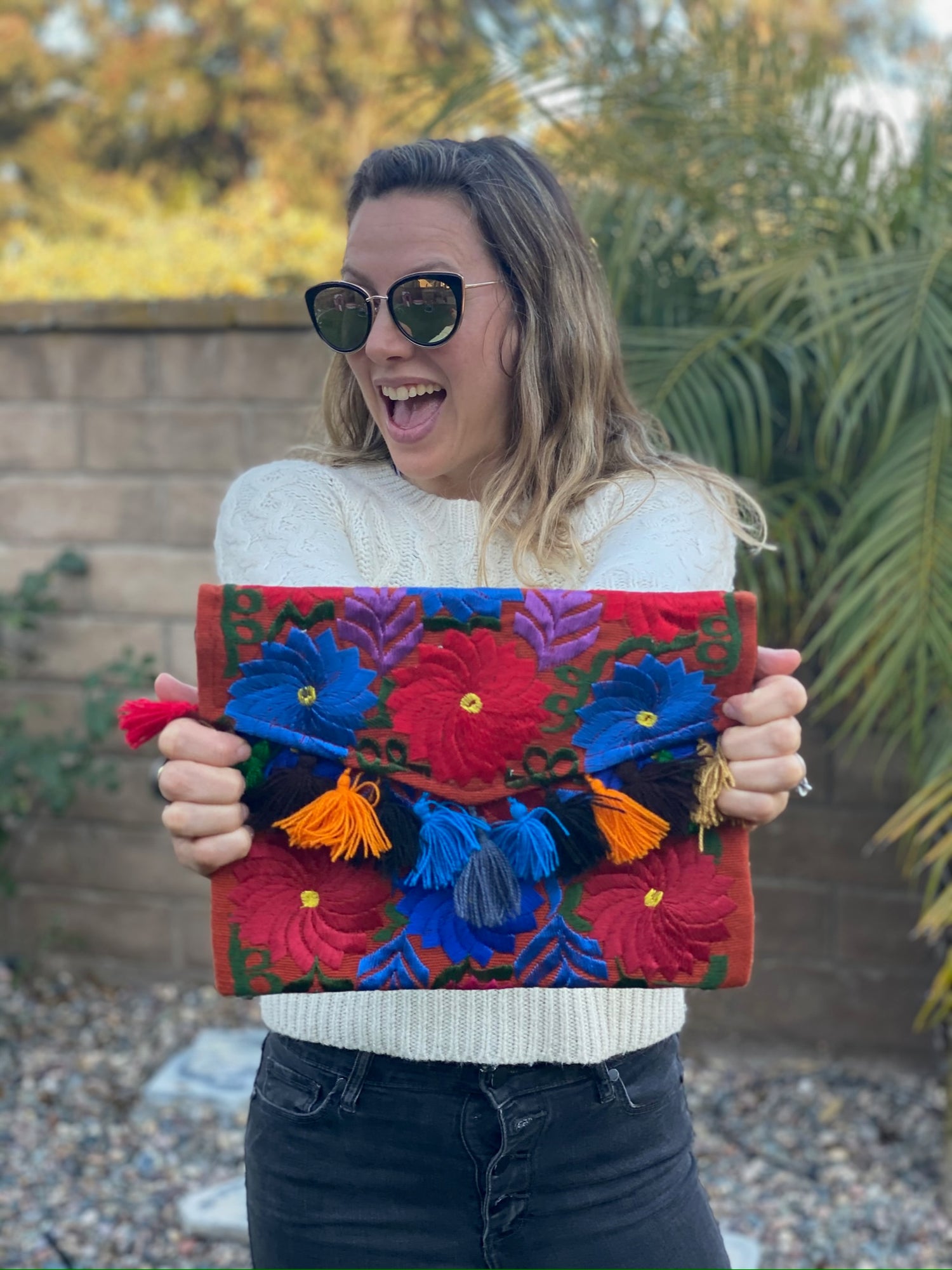The rebozo is more than just a beautiful shawl; it plays a vital role in Mexican festivals and celebrations.
This traditional garment symbolizes cultural pride and community spirit, making it an essential element in various joyous occasions.
As you explore the layers of meaning behind the rebozo, you will discover its historical roots and how it has evolved into a powerful symbol of Mexican identity.

Throughout the year, especially during significant holidays, the rebozo becomes a unifying thread that ties generations together. It is worn with pride during festivities such as Cinco de Mayo and Mexican Independence Day, where women display their heritage and artistic expression.
The rebozo showcases vibrant colors and unique patterns that reflect the region's culture, turning each celebration into a vivid tapestry of history and emotion.
As you delve into this topic, you’ll learn how the rebozo continues to inspire modern celebrations and the ways it connects communities. Understanding its significance allows you to appreciate the depth of this cherished garment during Mexico's most important events.
Key Takeaways
- The rebozo symbolizes cultural pride and unity in Mexican celebrations.
- Its historical roots add depth to contemporary festivities.
- You will discover the ongoing relevance of the rebozo in today’s cultural practices.
Historical Significance of the Rebozo

The rebozo holds a deep-rooted place in Mexican history and culture. It reflects the evolution of traditions and the intertwining of indigenous and Spanish influences, making it a powerful symbol of cultural identity and status.
Origins and Evolution in Mexican Heritage
The rebozo dates back to pre-Hispanic times, with origins linked to indigenous women in regions like Chiapas and Michoacán. Initially used for practical purposes, such as carrying children and goods, it later evolved into a versatile garment.
During the colonial period, the Spanish brought their own textile techniques. This blending created a unique fusion of styles and methods in making rebozos. Regions like Tenancingo became well-known for artisan craftsmanship, evolving the rebozo into an essential part of traditional attire.
Symbolism and Cultural Identity Through the Ages
As time passed, the rebozo grew beyond its original function. It became a powerful symbol of status and elegance among wealthy women. The choice of fabric, color, and design reflected social standing and cultural identity.
For many, wearing a rebozo is an act of pride and connection to heritage. In festivals and daily life, it represents unity among Mexican communities. The vibrant patterns and craftsmanship showcase regional pride, tying wearers to their local culture.
The Rebozo in Indigenous and Colonial Narratives
The rebozo is deeply embedded in both indigenous and colonial narratives. For indigenous women, it was a tool of survival and expression, incorporating traditional designs.
During the colonial era, the rebozo also played a role in the lives of wealthy Spanish women. Their styles often imitated indigenous patterns, highlighting the blending of cultures. Literature and art from this period frequently depict women adorned in rebozos, emphasizing their significance.
In modern times, the rebozo continues to honor this rich history while adapting to contemporary fashion. Each rebozo tells a story, serving as a reminder of the diverse cultural tapestry that defines Mexico today.
The Rebozo in Contemporary Mexican Festivities

The rebozo continues to play a vital role in modern Mexican celebrations, blending traditional and contemporary elements. This garment symbolizes community, love, and femininity while showcasing craftsmanship and creativity.
Rebozos as Fashion Statements in Modern Celebrations
In contemporary Mexican festivities, the rebozo has evolved into a vibrant fashion accessory. Designers are innovating by using intricate patterns and bright colors.
You can see rebozos draped elegantly over shoulders or wrapped around waists, adding flair to traditional outfits.
Many artisans incorporate contemporary aesthetics while honoring traditional weaving techniques. Designs often reflect cultural heritage and spiritual significance, using natural dyes from plants and insects. This trend allows individuals to express their identity while celebrating Mexican culture during festivals like Día de los Muertos and Mexican Independence Day.
Rebozos in Wedding Ceremonies and Other Rites of Passage
The rebozo holds special significance in weddings and other important life events. During ceremonies, brides often wear rebozos as symbols of love and motherhood. A wedding rebozo may feature elaborate fringes and intricate designs that tell a family’s story.
In other rites of passage, such as childbirth, the rebozo serves practical purposes. It is used to wrap newborns, showcasing its versatility. The custom of gifting rebozos as heirlooms reflects their deep emotional ties and cultural importance. It is a way to connect generations through love and tradition.
Artisans and Designers: Preserving Techniques and Innovating Designs
Artisans play a crucial role in keeping rebozo traditions alive. They use backstrap loom techniques to create handwoven pieces.
This craftsmanship not only ensures quality but also preserves cultural heritage.
Many designers also contribute by infusing modern elements into rebozo designs. Collaborations with artisans help create unique pieces that respect tradition while attracting new admirers. The movement toward supporting local artisans enhances community ties and strengthens cultural narratives.
By appreciating and purchasing these handmade creations, you support the artistry and dedication that goes into each piece. The rebozo remains a testament to Mexican resilience and creativity through generations.
Frequently Asked Questions

This section addresses common inquiries regarding the rebozo's cultural significance, usage in celebrations, and its historical context in Mexican society. You'll also discover details about how to wear a rebozo and the variations in designs and colors across regions.
What cultural significance does the rebozo hold in Mexican traditions?
The rebozo is more than just a garment; it represents identity and connection to Mexican heritage. It symbolizes femininity and strength, often worn by women during important events and rituals, showcasing pride in cultural roots.
How is the rebozo used during Mexican festivals and celebrations?
During festivals, the rebozo is often worn to honor traditions. It might be displayed during parades or dances, where its vibrant colors and intricate patterns add to the festive atmosphere. Women use it to express their cultural pride on special occasions like Independence Day.
Can you describe the historical origins of the rebozo in Mexican society?
The rebozo dates back to the colonial period in Mexico. It has indigenous roots and evolved through Spanish influence. Originally a practical item, it became a vital part of women's clothing, symbolizing their roles in family and society.
What are the traditional ways of wearing a rebozo during special events?
Women traditionally wear the rebozo in various styles, such as draped over the shoulders or wrapped around the head. Each method serves a purpose, whether for warmth, as a fashion statement, or for cultural representation during ceremonies.
How do the designs and colors of the rebozo vary across different Mexican regions?
Rebozos come in a range of designs and colors, each reflecting the region’s culture. For example, some areas favor bold, bright hues, while others may prefer more subdued tones. Patterns can also vary, showcasing local craftsmanship and artistic traditions.
What role does the rebozo play in Mexican dance and performance arts?
In dance and performance, the rebozo enhances visual storytelling. Dancers use it as an accessory to elevate their movements, connecting their art to cultural history.
The flowing fabric adds rhythm and beauty, making performances more engaging for audiences.




